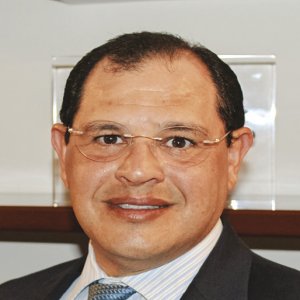Furthering a World Without Cash

STORY INLINE POST
Expanding the acceptance of electronic payments in Mexico depends heavily on the creation of synergies between the key players to change the Mexican mindset regarding the use of cash, says Antonio Junco, President and General Director for Mastercard Mexico and Central America. “In Mexico, only 14 percent of total commercial transactions are made using electronic payments. However, Mexico could reach 30 or 40 percent with the existing infrastructure. The challenge is to change the culture surrounding the use of electronic payments,” says Junco.
In the last five years, the number of electronic payments has increased, in part because the number of merchants accepting these payments has doubled, from almost half a million to a million. Junco says that this increase is the result of a first transformational wave that was bolstered by advancements in point of sale (POS) readers. “This first wave helped to double the number of merchants that accepted electronic payments but for this number to continue growing we need a second wave that includes new payment models, participants and new technology.”
Junco is convinced that Mastercard will contribute to this next wave by developing new technological solutions. “In Pakistan, Nigeria and India we launched a model for electronic payments acceptance that does not require a traditional or a mobile credit-card reader. Buyers and merchants can make a payment and complete a financial transaction with their mobile phones by using QR or alphanumeric codes. With this solution, merchants avoid any extra costs of purchasing a card reader.” According to INEGI, in Mexico 81 million people have a mobile phone, which could help to increase the number of electronic payments transactions. “There is a common misconception when you talk about technology. People tend to think that you need to invest millions in sophisticated solutions when in reality technology can be used to save money and lower initial investment costs,” says Junco.
He adds that the arrival of new businesses flows will also lead to greater financial inclusion. “The newspaper stand or the small convenience store owner is now able to have a bank account. With proof like this, reaching 30 percent in electronic payments becomes more feasible.”
Although credit card companies such as Mastercard are doing their part to promote the use of electronic payments, Junco says that greater partnerships across different industries is required. “We need to generate synergies between all the players in the ecosystem and we must all do our part,” he says.
The implementation of a solid regulatory framework is another key element in the equation, but a cultural change is also required. “In Mexico, there is a significant fear of being taxed and fiscally supervised. We need to find a way to convince the newspaper kiosk or the mom-and-pop shops operator to become digital and to start accepting electronic payments; it is a cultural change that has to happen for both users and merchants.” In India for example, authorities have chosen to implement tax incentives in an attempt to boost digital payments and Junco believes Mexican authorities could follow a similar path. “The tax issue is a window of opportunity to increase the costs of using cash and further the use of digital payments.”
The cost of cash also needs to be revealed. “Using cash is extremely expensive. It usually has a direct cost between 0.5 and 1 percent of a country’s GDP.” Direct costs include issuing expenses, transportation, and inclusion of security elements. “The indirect costs related to cash include corruption, money laundering and fiscal evasion. If we can manage to reduce these costs, the social benefit increases.”
According to a study conducted by The Better Than Cash Alliance, the federal government saves an estimated US$1.3 billion per year when transitioning to a digital payroll payments system. The same study estimates that if pension payments shifted to digital, savings could annually exceed the US$7 billion mark.
Although there is still much to be done, Junco believes that current efforts are heading in the right direction and that Mastercard will continue playing a vital role in the creation of a digital future in Mexico.
























